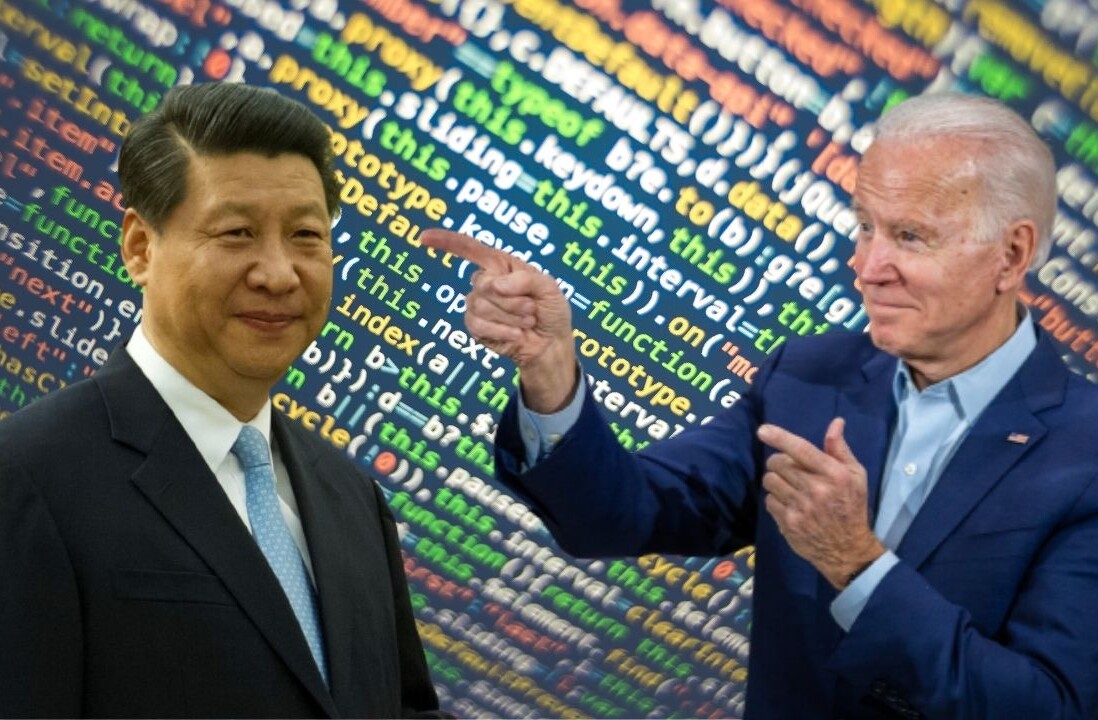
Did you know we have an online conference about digital marketing coming up? Re:Brand will share strategies on how brands can still succeed in these unprecedented times.
Capiche is a secret society for SaaS power users, building a new community of people who care about software to make the SaaS industry more transparent, together. This essay was written by Matthew Guay, Capiche‘s founding editor and former senior writer at Zapier.
When Wirecutter set out in 2011 to review and recommend the best gadgets, it was only natural they’d send prospective buyers to Amazon. With its promise to stock “everything, from A to Z,” Amazon carries most products Wirecutter recommends. And if you send customers to Amazon, they’re happy to send you a percentage of what those customers spend.
It’s a business model unique to and nearly as old as the internet, one both popularized by Amazon and part of how Amazon became so popular. When you sell nearly every product on earth and share a percentage of sales, your site is where everyone will link. The more people link to your site, the more authoritative Google thinks it is, and your site becomes the first result for searches most likely to turn into a sale.
It helped Amazon become one of the largest global retailers. Now that they’re king of the hill, though, they might not need the help so much—shown by their gradual cuts to affiliate commissions over the years. The same dollars that helped build their SEO moat in previous decades could, perhaps, build their Alexa or Prime TV moat instead.
Amazon’s not alone. Affiliate programs were one of the most popular original ways to incentivize free coverage of early SaaS. Today those programs are more scarce, replaced by partner programs that incentivize experts to sell more mature software.
We checked. Of the 100 of the top business software on Capiche, partnership programs are the primary way SaaS companies incentivize promoting their products today. Goodbye affiliates, hello sales.
Virtual shelf space

Software before the internet meant a trip to the store at best, a mail order and check at worst. Without the internet, there were few ways to discover new software from your desk.
Thus publishers, retailers, and distributors, the App Stores of their day. The best to find software was magazines like Byte and The Whole Earth Software Catalog. Developers needed traditional paper-and-ink publishers to put their software in front of prospective buyers. They also needed software publishers—the early software equivalent of what Penguin Random House is for books—to burn their software on disks and distribute them in boxes to retailers. That was a good enough business to fund SoftBank into the telecom and investment giant it is today after distributing around 50% of Japan’s software in the early ‘90’s.
Then came the internet and its unlimited digital inventory. No more boxed software and print magazines on shelves, nor trying to find a publisher to put your software in a box in the first place. Anyone could discover and download software in a few clicks.
And suddenly, discovery became the problem all over again.
Affiliates: Incentivize people to link to your site

Google to-do list app and you’ll get 5.6 billion results, of which at least a few hundred are unique software options. If you want your new to-do list app to be the top result, you need a lot of people linking to your product when writing about to-do list apps.
Thus affiliates. They were the perfect fit for the burgeoning blog scene in the early 2000’s. Software vendors needed traffic and links to their products; bloggers needed a way to make revenue from their articles. Much like how retailers would take a cut of the retail price, affiliate programs let you take a cut if you sent a new customer to a product.
What is an affiliate program?
Affiliate programs let anyone sign up to get a unique referral link where, when someone clicks that link and buys the product, the company will pay a set price or percentage back to the affiliate program member.
Affiliates make the most sense when you want a large number of people to promote your product, as perhaps they’ll link to you versus the competition since you’re paying. It’s nearly free marketing for software vendors. And it’s a genius way to build traffic to a marketplace like Amazon, since their single affiliate program covered so many products.
Except, not quite. Affiliate links encourage anyone to link to your product—fans and foes and forgettable alike. The software company and affiliate members’ interests are only aligned in that both want revenue, but both could find it elsewhere. There’s no product loyalty. And affiliate links may not even help your product’s search rankings, as Google increasingly scrutinizes the quality of linked sites.
The state of software affiliate programs today
Perhaps that’s why affiliate programs for software are increasingly less common, with GitHub, Zoom, Basecamp, Ahrefs, Apple’s App Store, and more having closed their affiliate programs over the years. From our survey of 100 popular business SaaS products, today only 21% offer affiliate programs.
Software affiliates today give an average 27% commission typically for the first month’s payment, from a low of 10% for PandaDoc and QuickBooks to a high of 83% for Adobe Creative Cloud. Or they pay a flat rate per sale, where $20 is most common (ranging from a base of $5 for Office 365 and Freshworks to “up to” $1000 per customer for HubSpot).
But what if there’s a better way to spread your product than paying people who talk about it?
Enter Dropbox.
Credit: Incentivize users to share your product with friends

When Dropbox launched in 2008, the best way to share files was to send them as an email attachment, or copy them to a flash drive and physically hand it to your colleague. Dropbox said “what if you could just share a whole folder, and everything you put in that folder automatically shows up on your colleague’s computer,” and it was so.
Dropbox was perhaps the perfect business tool to spread by word of mouth. You’d need to send someone a file, and so would persuade them to install Dropbox to make it easier. Much like a social network, the more people that use Dropbox, the more you’re likely to use it.
Then you’d fill up your Dropbox storage and would either need to pay or stop using Dropbox. Dropbox would prefer the former, but perhaps it’d take a bit more time to convince you of the value. Thus the Dropbox credit program offering more storage for free.
What is a credit program?
Credit programs let users earn credit for performing tasks in an app or inviting friends and colleagues to use the software. They encourage people to use advanced features in a product and nudge them to eventually pay for the product by making the initial upgrade cheaper.
For Dropbox, credit came in the form of extra storage. Within months after launching, Dropbox had a referral program where if you invited someone to Dropbox, you got 500Mb extra storage for free. And if you performed onboarding tasks—such as installing Dropbox on your computer—you’d get another storage bonus. That incentivizes you to try Dropbox features and get your friends to install it.

Notion today offers a similar program linked to in-app cash. Each time you perform an onboarding task like importing Evernote notes or invite a friend, you get $5 in-app credit. Then if you buy a paid Notion plan—something increasingly likely the longer you use Notion, as your free space fills up—your first few months will be free or cheaper.
Dropbox credit gave you something extra today. Notion credit pushes you towards taking an action in the future. Both reward existing users for sharing and use that as a carrot to push the activities that are most likely to generate revenue for the company in the long term.
The state of software credit programs today
Credit programs are most common in buzzy, prosumer apps—software like Notion and Dropbox where you might use them at work and home. And while they may live on in Dropbox, they’re most common in the early years of a product’s life.
A discount off Salesforce or extra Jira features for free wouldn’t incentivize most people to share as their company pays for the software. But free Dropbox storage and Notion credit might encourage sharing, as you’re more likely to pay for an account yourself.
Credit programs are so often talked about, they seem more common than they actually are. Only 9% of the top hundred products we checked offer credit programs, including Dropbox, Notion, Airtable, Trello, DigitalOcean, Todoist, Harvest, and more. The typical credit program offers $10 or a month of the paid plan for free, per person you refer. They’re often capped, too—Dropbox only gives credit for the first 32 people you invite.
Then there are variants. Hotjar and Drift, for instance, offers hoodies and other swag if you refer enough people—something to encourage fans to share the product, even if their company pays for the product. Then, Referral programs—offered by 4 of the products we checked, including Help Scout and Copper—fit right between affiliate and credit promotions. Refer a friend to the product, and referral programs pay you cash (or an Amazon gift card, in Help Scout’s case), again to incentivize sharing even if you don’t pay.
Dropbox turned casual users into people who started saving everything to Dropbox. Notion got friends to tell friends about it to save on their subscription. And Help Scout turns support team members into evangelists that let colleagues in other companies know why their software is great.
What if you had people doing that full-time, for free?
Partners: Incentivize experts to promote your product

Thus the partnership program, the most popular way for SaaS to incentivize sharing their product. It’s so common, 42% of the SaaS we surveyed offer partner programs, the majority with revenue share.
Salesforce popularized the software-as-a-service model and had one of the earliest affiliate programs to promote it, but by 2006 had already started shifting to promoting partnerships instead. And the world of SaaS has followed suit.
Say someone builds eCommerce sites or sets up CRMs for customers. Turn them into a partner, and they’re more likely to build sites using your eCommerce platform or suggest they use your CRM.
It’s the perfect fit, a pure win/win if you believe the marketing. Google Cloud’s partnership page claims “the best solutions are born from collaboration.” Salesforce says their “Salesforce Partner Program enables partners to build and grow successful businesses while delivering customer success.” HubSpot promises “You don’t have to do everything for your clients if you can enable anything.”
What are software partnership programs?
Software partnership programs get product experts—who typically have passed certification or have a consulting business in your industry—to sell your software. They’re similar to affiliate programs in that they typically pay a percentage of sales revenue to people who promote the product. The difference is, partner programs are built around experts, and are only open to people who pass certification (such as Salesforce, with several program levels and varying payment structures depending on your certification), have a related business in your industry, or who pay for access (a notable requirement to join HubSpot’s partnership program).
The value software companies offer their partners vary too. Stripe and Zapier, for instance, list partners in a partner directory, but don’t offer revenue share. Others, including Salesforce and HubSpot, share revenue and offer priority support. Shopify even offers ongoing revenue share, encouraging partners to both help their customers launch on Shopify and keep their store running over the long term.
At a minimum, partnership programs help software companies build an army of salespeople that are paid solely on commission. They’re trained in how to use the product, get some support in selling it, but otherwise are on their own.
At the best, though, partnership programs encourage people to build businesses around your product, through services and add-ons, turning your product into an ecosystem. According to a Digiday article on Shopify, partners brought in 18,000 new customers to Shopify, and generated $800 million revenue compared to Shopify’s own $673 million in revenue in 2017. That’s similar to how Microsoft founder Bill Gates defined a platform, in what Statechery author Ben Thompson called The Bill Gates Line, based on a quote from Gates himself: “A platform is when the economic value of everybody that uses it, exceeds the value of the company that creates it.” When partnership programs drive that much revenue, there’s a mutually beneficial relationship that’s incentivized for the long haul.
If a partnership program can turn your software into a platform, the net effect can be far more valuable than affiliate links or community sharing could build on their own.
Quality versus quantity
Here’s the confusing thing: Many software promotion programs are named incorrectly. Dropbox calls their credit program a referral program; ClickUp calls their affiliate program a partner program. Here’s what makes them different:
- Affiliate programs pay anyone who signs up a percentage of software sales they send in.
- Credit programs give in-app credit or unlock features for existing users who share the software.
- Partnership programs share revenue with (or at least help send business to) product experts who pass training or certification and help their customers use the software.
And each program works better for specific business models and maturity stages:
- Affiliate programs work well for one-time sales in highly competitive, consumer-driven software markets that need a high volume of leads. They build a content ecosystem recommending the product.
- Credit programs work well for prosumer software where the product works better the more people that use it, and where users may pay for it on their own and thus are incentivized to earn credit. They build a community of engaged users.
- Partnership programs work well for business and enterprise software with a longer sales process that need more qualified leads and 3rd party services to assist adoption. They build an ecosystem of add-ons and services around a product.
Which perhaps is why they change over time. A product might need a credit program to accelerate early adoption initially, or an affiliate program to boost referral traffic, but as it matures and goes upmarket, quality leads and support matter more.
In a world of rising software prices and increasingly obscured software plans, a partner team that makes the case for your product to customers may be more valuable than ever before.

Get the TNW newsletter
Get the most important tech news in your inbox each week.





